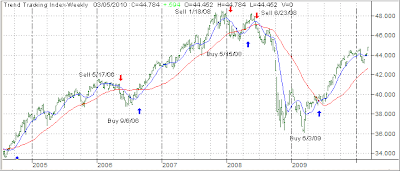 Lately, dealing with the specter of potentially rising interest rates has been a frequent question. In “Three ETFs For Rising Interest Rates,” several possibilities are discussed:
Lately, dealing with the specter of potentially rising interest rates has been a frequent question. In “Three ETFs For Rising Interest Rates,” several possibilities are discussed:
We’ve been enjoying historically low interest rates for the last decade … even more so in the last two years. You know the party is going to end at some point. And I’m beginning to suspect the end will come sooner rather than later.
Whenever rates move back up, you won’t have to just sit still and accept it. Exchange-traded funds (ETFs) give you many ways to protect your principal and profit from rising rates. Today I’ll tell you about three of them …
Rising Rate Protection ETF #1:
iShares 1-3 Year Treasury ETF (SHY)
A cardinal rule of debt is that overstretched, low-income borrowers pay higher interest rates. And right now no one is more burdened with debt than the U.S. government.
…
When rates do go up, the first domino to fall will be long-term bonds: Treasury debt maturing in ten years or more. This means you can expect a stampede into the short end of the maturity scale. Then the shortest-term Treasury paper will go up in value simply because so many people will want to own it.
SHY is an ETF tailor-made for this scenario. It holds Treasury debt that matures in the 1-3 year range. This is a “sweet spot” for investors: Long enough to give you some time, but short enough to avoid long-term forecasting errors.
Could SHY get hurt if short-term rates go up? Absolutely. However, I still think this ETF will outperform long-term bonds over the next few years, all things considered. So take a look at SHY for money that you need to keep safe.
Rising Rate Protection ETF #2:
ProShares UltraShort 7-10 Year Treasury (PST)
When interest rates go up, bond prices go down. That’s because newly-issued bonds will pay higher rates than older ones, which makes the old ones worth less.
The longer the maturity, the more the price is affected by rising rates. And the change can be significant for bonds in the 7-10 year range. That’s where an inverse ETF like PST can help. PST could rise as much as 10 percent for each 1 percent jump in the 10-year Treasury rate.
PST does this by shorting Treasury bonds. And while that can work for short-term trades, it’s not a very good long-term strategy …
Moreover, PST employs 2x leverage, so you are effectively paying interest twice.
The best opportunity for making money with PST is to own it for no more than a few weeks when 10-year interest rates are going up. If you hang on after rates level off, you could actually lose ground and your profits will eventually disappear because of the interest payments.
Rising Rate Protection ETF #3:
Direxion Daily 30-Year Treasury Bear 3x Shares (TMV)
If you believe long-term rates are headed up, and soon, TMV could be your ticket to major profits. It’s an inverse ETF that tracks 30-year bond prices with 3x leverage.
Suppose, for instance, interest rates spike higher and the 30-year bond price index falls 5 percent in a day … you can expect TMV to rise 15 percent on that same day. Yowza!
This leverage could also be a ticket to major losses. For example, if your timing is off, even by a few days, you could get your head handed to you. That’s why leveraged ETFs are intended only for the most aggressive investors.
Another thing to consider is the “Daily” part of the name. Leverage in TMV and similar ETFs is reset every day. Over time, this means the leverage factor on your shares could be much more than 300 percent — or much less.
These are certainly 3 alternatives on how to profit in a rising interest rate environment. The last two are clearly designed for aggressive investors only using these ETFs on a short-term trading basis and not as a long-term holding.
These are only some of the possibilities when interest rates are starting to move higher. As trend followers, we have some other options, but they are not apparent at this point.
For example, I could imagine that some currencies (like the dollar) or other asset classes would make a move as well. It’s not that difficult to track if you use my weekly StatSheet as a guide and focus on the %M/A column in the ETF Master List.
The %M/A column shows how far above or below a fund/ETF is currently positioned relative to its own long term trend line (39 week SMA). What you want to look for is an ETF that is currently in negative territory and moving up.
Once the price breaks through its trend line to the upside, which is identified by a positive %M/A number, it indicates a trend change and you could consider taking a position subject to our trailing stop loss rules.
While every investor wants to know in advance what to buy when interest rates head higher, this is not always possible. Let the trends be your guide in filtering out the daily market noise and wait until a clear signal has emerged before taking action.
Disclosure: I have no holdings in the ETFS discussed





